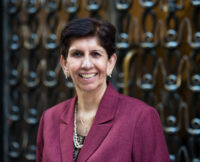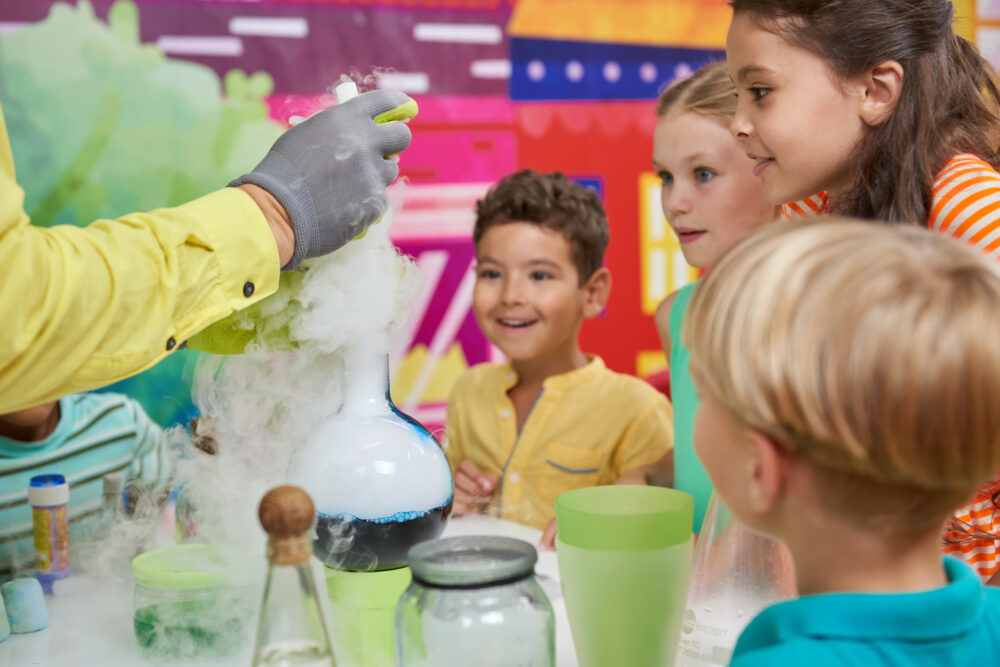STEAM Education in schools has undergone drastic changes and the lessons learnt will continue to shape the future of the programme
Dubai, Nov 5, 2021: As we recover from the abrupt disruption of the education system due to the pandemic, STEAM (Science, Technology, Engineering, Arts and Math) education in schools has undergone drastic changes and the lessons learnt will continue to shape the future of the programme. Practices that were played out in 2020 are forming the trends for the future.
The pandemic put an immediate break to physical and in-person schooling, thereby severely hampering the hands-on approach of STEAM programmes. As most schools moved to distance learning starting March 2019, STEAM lessons continued through virtual simulation, DIY and digital activities.

Moving online was not an easy task. Muna Ali, Dean of Student Life, High School Biology Teacher and AP Biology, GEMS American Academy – Qatar admits that it was difficult going fully online with STEAM and even with blended learning, face-to-face time was cut so much that many students missed entire units in previous grades.
The biggest loss during the initial phase was in the area of learning skills such as grit, collaboration and group reasoning.
“The time taken to teach individual objectives from STEAM lessons taught in isolation and the depth of understanding without the STEAM-based real-world learning have led to gaps in learning across STEAM topics,” says Steven Kay, Assistant Principal, Teaching and Learning, Director of STEAM, GEMS Wellington Academy – Al Khail,
According to him, the biggest gaps were often not in the factual knowledge gained by the children but in the learning skills that they possess.

One of the significant casualties of remote teaching of STEAM was lack of student engagement and schools have been exploring possible technological solutions that can address the problem. “Perhaps the biggest trend seen across all schools is in how digital technologies have been adapted to promote STEAM and allow it to continue in a positive and effective manner.” says Kay.
As the COVID situation eased and the UAE schools adopted a hybrid model in 2020-21, schools with their own dedicated labs continued with STEAM lessons, maintaining safety protocols.
Educators are using technology to enhance both STEAM and wider learning. “We have increased the number of physical spaces available to carry out STEAM lessons and research so that classes can be made smaller to allow all children access to engage in STEAM learning,” says Kay.
Kay adds that an audit of technologies, curriculum and projects was carried out to make sure that children across the school experienced a wider selection of integrated learning. In Early Years and Key Stage 1, teachers have had to find new ways of integrating the practical sciences and the arts so that children develop a broader skill set to enable them to excel in their learning as they get older.
To overcome the issue of sharing equipment and collaborating at a physically close distance as social distancing remains in place for in-person learning, educators are splitting the class into two halves or, in some cases, three. It allows the students to have their own piece of equipment while having enough space among themselves to carry out the tasks.
According to Ali, schools were forced to adapt to the new reality. “For example with labs, I’ve been able to utilise online simulations and ‘dry’ labs,” she says. “Last year we had blended learning for most of the year, and so our class sizes were drastically smaller. While we may have taken longer to get through the content, we were also able to have more meaningful inquiry activities and explorations and provide more one-on-one feedback,” she adds.
Ali says that they plan to address the issue of overcoming the lack of learning skills with mini-review sessions at the start of each unit. According to her, they are building these back through increased modelling and heightened reward systems.
“STEAM is a key driver of such competencies,” says Kay, referring to qualities such as grit, collaboration and group reasoning. “We are now finding ways to get the children back into our STEAM labs through innovative ways of collaboration. Digital collaboration platforms and a tweaking of lesson plans to cover more objectives are starting to address the gaps,” adds Kay.

Meanwhile, teachers had to adapt their teaching techniques. “For example in Science, the teacher performed a live demonstration of the experiment or shared a simulation where students could change the variables and work on the scientific method. Google Earth and other interactive resources helped connect Math to real-life and look at elevation and depression,” explains Jaya Bhavnani, Associate Head of Upper School & IB Coordinator Dwight School Dubai.
Teachers assigned the background reading for a lab session in advance so that students could familiarize themselves with the scientific concepts. “They would then watch while the teacher performed the final experiment with hazardous materials or specialized equipment via livestream,” says Nilesh Korgaonkar, CEO, ATLAB.
On the upside, e-learning accelerated collaboration among students and helped them develop a range of skills including sharing ideas in a group, logging in to multiple accounts, keeping track of their schedule and managing assignments.

“The steep learning curve of digital literacy was significant, and students began to show stronger ownership of their learning; organising files, preparing lesson materials ahead of time, and seeking out further feedback from teachers,” says Chandini Misra, Head of Senior School, Repton Al Barsha.
Meeting the challenges
While educators battled myriads of challenges owing to different modes of instruction, suppliers of STEAM solutions faced challenges of a different kind altogether ranging from a drastic drop in sales to logistics and pricing issues.
“Online learning was the new way forward. That however, brought in new challenges. The flood of providers from India and other parts of the world, wherein cost structures are abysmally low led to a downward pressure on pricing, as did the financial pressure on households in the UAE,” says Priyanka Chandanani, Managing Partner, The Logix Engine.
Suppliers faced considerable delays in receiving products from overseas too. An increase in the cost of shipping has added to their burden, admits Tanmay Sankhe, Dept Head, STEAM Education – Emerging Stars Learning Center LLC.
“In the year 2020-21, the business was down 80%. Usually STEAM programmes are outsourced by most of the schools here in the UAE. We believe there was a complete halt on providing STEAM courses in the school unless the school had its own dedicated STEAM lab,” says Sankhe.
However, with things getting back to normal, the business is getting close to pre-COVID times,” adds Sankhe.
STEAM learning trends
Creating lesson videos, collaborating and sharing resources online, virtual workshops, exhibitions, conferences, fairs, competitions and events are some of the practices that were adopted during the pandemic. It is expected that these are going to be carried over post pandemic too. “The simulations, data capture and access to experts that we can now use in the classroom give a very different perspective to the learning experiences; and we will continue to use them after the pandemic is over,” says Misra.
There is a growing interest in coding, python, robotics and 3D designing as well as AI, virtual simulation, virtual reality, personalized learning, tutoring, feedback and design thinking based resources. According to Korgaonkar, products that cater to hybrid learning are expected to have more demand among educators. “Schools and universities are looking to design a curriculum that offers the flexibility of digital and experiential laboratory-based learning,” adds Korgaonkar.
Whether educators teach in-person, remotely or use a hybrid model, STEAM lessons will look very different going forward. Enhanced integration of technology; constant evaluation of STEAM pedagogy; use of AI in the classroom for personalized learning, tutoring and feedback; and simulations are here to stay.








